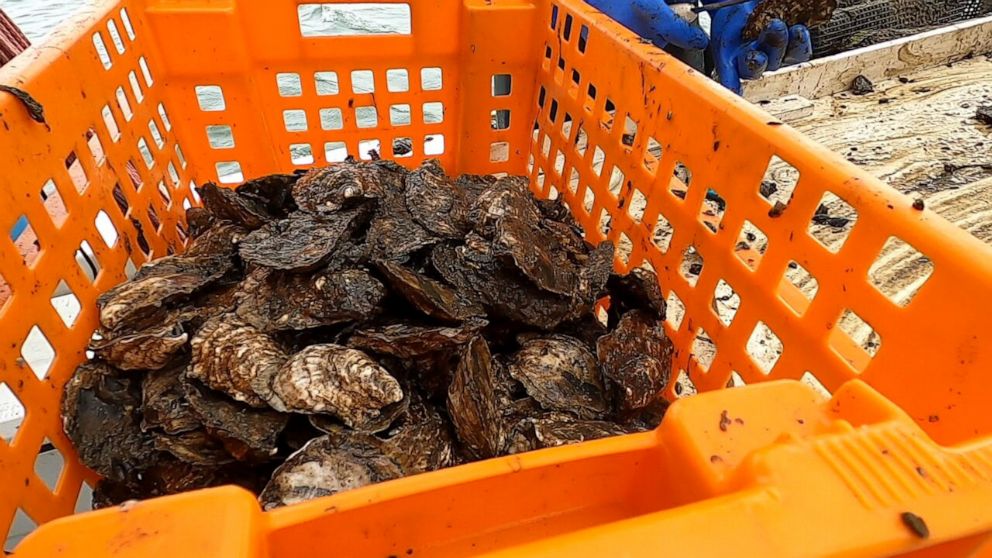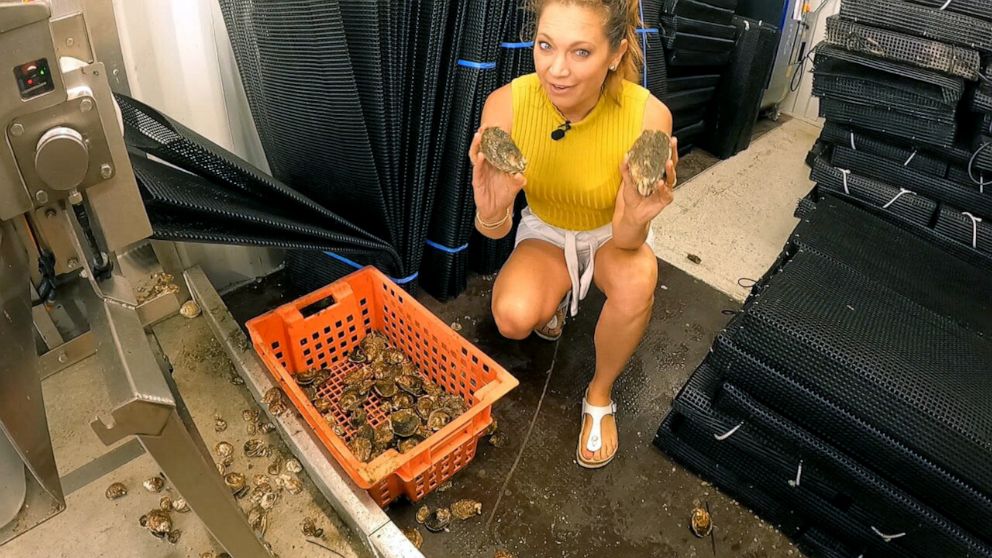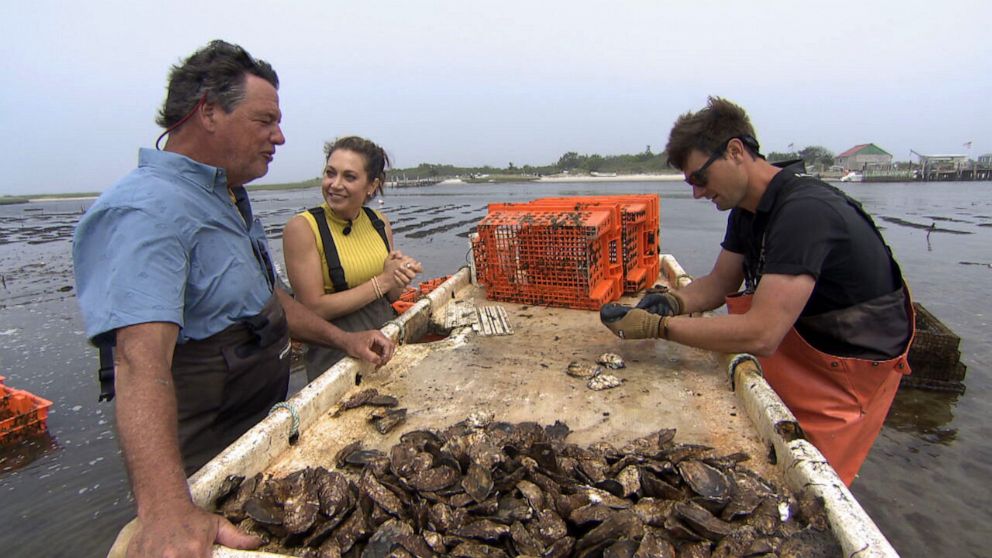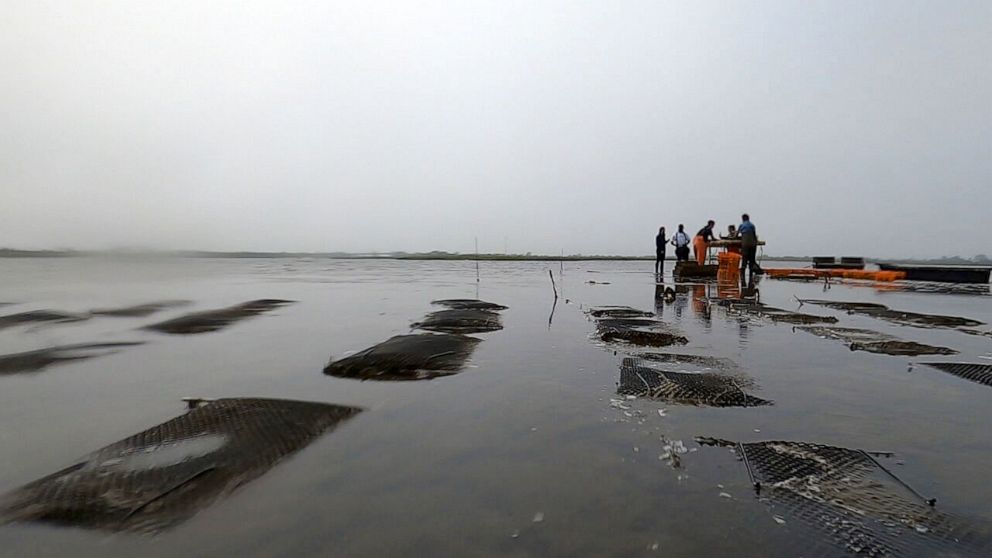Uneaten oysters provide pearl of an environmental solution during COVID-19 pandemic
Environmental groups and oyster farmers have found a silver lining -- or a pearl -- amid the ravages of the pandemic.
Millions of oysters that went unsold when restaurants closed are finding a new life back in the ocean, where advocates say they'll help the environment and help coastal communities combat climate change.

Seafood and shellfish demand crashed during the pandemic. By the time restaurants began to reopen, many oysters had grown too big to eat.
But environmental groups quickly recognized a way to use those oysters in coastal communities. The Nature Conservancy and Pew Charitable Trusts announced plans to buy millions of unsold oysters and return them to the ocean as living reefs.
"We were just sitting on top of these huge oysters, just kept getting bigger and bigger by the day, and we, we couldn't sell them. So they came in with a program, the SOAR program, and bought a lot of oysters from these guys. And it was a real lifesaver," said Matt Welling, the owner of Lucky 13 Oysters in Long Island, New York.
The SOAR program, which stands for Supporting Oyster Aquaculture and Restoration, brought together the Nature Conservancy and Pew Charitable Trusts. They plan is to spend $2 million on more than 5 million surplus oysters -- enough to rebuild 27 acres of shellfish reefs.

Oysters filter water and the physical reef creates an ecosystem for other sea life, in addition to becoming a kind of natural speed bump for storm surge that can erode coastlines during storms.
"Oysters, when they're in their natural habitat, really create this incredible barrier for storm surges. So it protects us ... these incredible ecosystems that are on the shoreline, natural infrastructure that's protecting us," Jennifer Morris, CEO of The Nature Conservancy told ABC News in an interview.

Morris said 85% of oyster reefs in the country have been destroyed, mostly from overuse, but the program helps to restore those habitats.
"We think this is a real need to help farmers who can't sell their entire production, who are seeing that the oysters are maturing and there's no market for them. So we help them by taking them off their hands and then putting them back into their natural habitats, for all of us to enjoy the benefits that those habitats provide," she said.
A UN climate report in 2019 found that eating more seafood and shellfish also can also be a way to reduce greenhouse gas emissions from agriculture and improve ocean ecosystems that have seen rising temperatures and acidity from increased carbon dioxide absorption.
"Oysters are probably one of the most sustainable foods we have. They require no feed, no fresh water, no land to produce. And they're doing something good for the environment when they're filtering the water, providing habitat for surrounding fish and invertebrates," said Robert Jones, the global aquaculture lead from the Nature Conservancy.

The SOAR program and Billion Oyster Project worked with students from the Harbor School in New York to install a new reef off Governor's Island, using 5,000 oysters from Lucky 13 Oysters. The living reef aims to attract more oysters and other wildlife and will continue to grow and protect the island and coastline during storms.
Billion Oyster Project Executive Director Pete Malinowski said they hope to restore some of the ecosystem and natural oyster populations that used to be part of New York Harbor. The Nature Conservancy has supported similar programs along the Gulf Coast in Texas, Alabama and Louisiana.
"New York Harbor used to be one of the great ecological treasures of the world. And we destroyed that by harvesting all the oyster reefs. The harbor is essentially a 200,000-acre forest that's been clear cut," he said. "We think that by restoring oyster reefs to the harbor we can restore that lost habitat and also use it as a way to connect New Yorkers back to the harbor."



